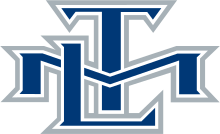Toronto Maple Leafs
| Toronto Maple Leafs | |
|---|---|
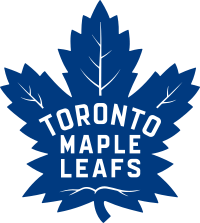 | |
| Conference | Eastern |
| Division | Atlantic |
| Founded | 1917 |
| History | Toronto Arenas 1917–1919 Toronto St. Patricks 1919–1927 Toronto Maple Leafs 1927–present |
| Home arena | Air Canada Centre |
| City | Toronto, Ontario |
| Colours | Blue, white[1][2]
|
| Media | Leafs TV Sportsnet Ontario TSN4 Sportsnet 590 The Fan [3] TSN Radio 1050 |
| Owner(s) | Maple Leaf Sports & Entertainment Ltd. (Larry Tanenbaum, chairman) |
| General manager | Lou Lamoriello |
| Head coach | Mike Babcock |
| Captain | Vacant |
| Minor league affiliates | Toronto Marlies (AHL) Orlando Solar Bears (ECHL) |
| Stanley Cups | 13 (1917–18, 1921–22, 1931–32, 1941–42, 1944–45, 1946–47, 1947–48, 1948–49, 1950–51, 1961–62, 1962–63, 1963–64, 1966–67) |
| Conference championships | 0 |
| Presidents' Trophies | 0 |
| Division championships | 5 (1932–33, 1933–34, 1934–35, 1937–38, 1999–00) |
| Official website | www |
The Toronto Maple Leafs (officially the Toronto Maple Leaf Hockey Club) are a Canadian professional ice hockey team based in Toronto, Ontario. They are members of the Atlantic Division of the Eastern Conference of the National Hockey League (NHL). The team is one of the "Original Six" league members. They are owned by Maple Leaf Sports & Entertainment, Ltd. and are represented by Chairman Larry Tanenbaum. In February 1999, they moved to the Air Canada Centre, which replaced Maple Leaf Gardens, the team's home since 1931.
The franchise was founded in 1917, operating simply as Toronto and known today as the Toronto Arenas, as it was operated by the Toronto Arena Company, owners of the Arena Gardens arena. In 1919, the NHL transferred the franchise to new owners who christened the team the Toronto St. Patricks. The franchise was sold in 1927 and was renamed the Toronto Maple Leaf Hockey Club. The team colours are navy blue and white.
The Maple Leafs have won thirteen Stanley Cup championships, second only to the 24 championships of their primary rival, the Montreal Canadiens. They won their last championship in 1967. Their 48-season drought between championships is currently the longest in the NHL.
With an estimated worth of US$1.3 billion, the Leafs are the most valuable franchise in the NHL, followed by the New York Rangers and the Montreal Canadiens. In 2015, they were ranked by Forbes as the 37th most valuable sports team in the world (and the only NHL team to be in the top 50).[4]
Team history
Early years
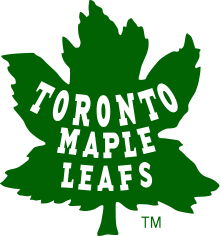
The National Hockey League was formed in 1917 in Montreal by teams formerly belonging to the National Hockey Association (NHA) that had a dispute with Eddie Livingstone, owner of the Toronto Blueshirts. The owners of the other four clubs — the Montreal Canadiens, Montreal Wanderers, Quebec Bulldogs and Ottawa Senators — wanted to get rid of Livingstone, but discovered that the NHA constitution did not allow them to simply vote him out of the league. Instead, they opted to create a new league, the NHL, and did not invite Livingstone to join them. They also remained voting members of the NHA, and thus had enough votes to suspend the other league's operations, effectively leaving Livingstone's squad in a one-team league.[5][6][7]
However, the other clubs wanted to have a team from Toronto (Canada's second largest city at the time). They also needed another team to balance the schedule after the Bulldogs suspended operations (and as it turned out, would not ice a team until 1920). The NHL granted a "temporary" Toronto franchise to the Arena Company, owners of the Arena Gardens.[8] The Arena Company leased the Blueshirts' players and was given until the end of the season to resolve the dispute with Livingstone. The franchise did not have an official name, but was informally called "the Blueshirts" or "the Torontos" by the fans and press.[9] Under Manager Charlie Querrie and Head Coach Dick Carroll, the Toronto team won the Stanley Cup in the NHL's inaugural season.[7] Although the roster was composed almost entirely of former Blueshirts, the Maple Leafs do not claim the Blueshirts' history.
For the next season, rather than return the Blueshirts' players to Livingstone as originally promised, the Arena Company formed its own team, the Toronto Arena Hockey Club, which was readily granted membership in the NHL. Also that year, the Arena Company decided that only NHL teams would be allowed to play at the Arena Gardens—a move which effectively killed the NHA.[5] Livingstone sued to get his players back. Mounting legal bills from the dispute forced the Arenas to sell most of their stars, resulting in a horrendous five-win season in 1918–19. When it was obvious that the Arenas would not be able to finish the season, the NHL agreed to let the team halt operations on February 20, 1919. The NHL ended its season and started the playoffs. The Arenas' .278 winning percentage that season is still the worst in franchise history. However, the 1919 Stanley Cup Finals ended without a winner due to the worldwide flu epidemic.
The legal dispute forced the Arena Company into bankruptcy, and it was forced to sell the team. Querrie put together a group that mainly consisted of the people who had run the senior amateur St. Patricks team in the Ontario Hockey Association. The new owners renamed the team the Toronto St. Patricks (or St. Pats for short), which would operate until 1927. The team's jersey colours changed from blue to green, winning a second Stanley Cup championship in 1922.[10]
During this time, the St. Patricks allowed other teams to play in the Arena whenever their home rinks lacked proper ice in the warmer months. At the time, the Arena was the only facility east of Manitoba with artificial ice.[11]
| Part of the series on | ||||||||||
| Evolution of the Toronto Maple Leafs | ||||||||||
| Teams | ||||||||||
| ||||||||||
| Ice hockey portal · |
Conn Smythe era
Querrie lost a lawsuit to Livingstone and decided to sell the St. Pats. He gave serious consideration to a CAD$200,000 bid from a Philadelphia group. However, Toronto Varsity Graduates coach Conn Smythe put together a group of his own and made a $160,000 offer. With the support of St. Pats shareholder J. P. Bickell, Smythe persuaded Querrie to accept their bid, arguing that civic pride was more important than money.
After taking control on Valentine's Day 1927, Smythe immediately renamed the team the Maple Leafs. The Maple Leafs say that the name was chosen in honour of the Maple Leaf Regiment from World War I; however, the Toronto Maple Leafs baseball team had won the International League championship a few months earlier and had been using that name for 30 years. As the regiment is a proper noun, its plural is Maple Leafs (not Maple Leaves). Another story says that Smythe named the team after a team he had once scouted, called the East Toronto Maple Leafs, while Smythe's grandson stated that Smythe named the team after the Maple Leaf insignia he had worn during the First World War.[12] Initial reports were that the team's colours would be red and white,[13] but the Leafs wore white sweaters with a green maple leaf for their first game on February 17, 1927.[14] The next season, the Leafs appeared for the first time in the blue and white sweaters they have worn ever since. The Maple Leafs say that blue represents the Canadian skies and white represents snow. However, they also followed the longstanding tradition of top-level Toronto teams using blue as their primary colour, which started with the Toronto Argonauts in 1873 and the University of Toronto Varsity Blues in 1877, and had been upheld by the Maple Leafs baseball team.
1930s: Opening of Maple Leaf Gardens

After four more lacklustre seasons (including three with Smythe as coach), Smythe and the Leafs debuted at their new arena, Maple Leaf Gardens, with a 2–1 loss to the Chicago Black Hawks on November 12, 1931.
Led by the "Kid Line" (Busher Jackson, Joe Primeau and Charlie Conacher) and coach Dick Irvin, the Leafs captured their third Stanley Cup during that season, vanquishing the Montreal Maroons in the first round, the Boston Bruins in the semifinals, and the New York Rangers in the finals. Smythe took particular pleasure in defeating the Rangers that year; he had been tapped as the Rangers' first general manager and coach in the Rangers' inaugural season (1926–27), but had been fired in a dispute with Madison Square Garden management before the season.
Leafs star forward Ace Bailey was nearly killed in 1933 when Boston Bruins defenceman Eddie Shore checked him from behind into the boards at full speed. Maple Leafs defenceman Red Horner knocked Shore out with a punch, but Bailey, writhing on the ice, had his career ended. The Leafs would hold the NHL's first All-Star Game to benefit Bailey.
The Leafs reached the Finals five times in the next seven years, but bowed out to the now-defunct Maroons in 1935, the Detroit Red Wings in 1936, the Chicago Black Hawks in 1938, Boston in 1939 and the hated Rangers in 1940. At this time, Smythe allowed Irvin to go to Montreal to help revive the then-moribund Canadiens, replacing him as coach with former Leafs captain Hap Day.
1940s: A second decade of success

In the 1942 season, the Maple Leafs were down three games to none in a best-of-seven final in the playoffs against Detroit. Fourth-line forward Don Metz then galvanized the team, coming from nowhere to score a hat-trick in game four and the game-winner in game five, with the Leafs winning both times. Captain Syl Apps had won the Lady Byng Memorial Trophy that season, not taking one penalty and finishing his ten-season career with an average of 5 minutes, 36 seconds in penalties a season. Goalie Turk Broda shut out the Wings in game six, and Sweeney Schriner scored two goals in the third period to win the seventh game 3–1.
Apps told writer Trent Frayne in 1949, "If you want me to be pinned down to my [biggest night in hockey but also my] biggest second, I'd say it was the last tick of the clock that sounded the final bell. It's something I shall never forget at all." It was the first time a major pro sports team had come back from 3–0 to win a best-of-seven championship series.
Three years later, with their heroes from 1942 dwindling (due to either age, health or the War), the Leafs turned to lesser-known players such as rookie goaltender Frank McCool and defenceman Babe Pratt. They upset the Red Wings in the 1945 Finals.
The powerful defending champion Montreal Canadiens and their "Punch Line" (consisting of Maurice "Rocket" Richard, Toe Blake and Elmer Lach), were the Leafs' nemesis two years later when the two teams clashed in the 1947 Finals. Ted "Teeder" Kennedy scored the game-winning goal late in Game 6 to win the Leafs their first of three-straight Cups, an NHL first. With their victory in 1948, the Leafs moved ahead of Montreal for the most Stanley Cups in League history. It would take the Canadiens ten years to reclaim the record.
1950s: The Barilko curse
The Maple Leafs and Canadiens met again in the finals in 1951, with five consecutive overtime games. Tod Sloan scored with 42 seconds left in the third period of game five to tie, and defenceman Bill Barilko, who had scored only six goals in the regular season, scored the game-winner. Barilko's glory was short-lived: he disappeared in a plane crash near Timmins, Ontario, barely four months later. The Leafs won no more Cups that decade.
1960s: New owners and a new dynasty
Before the 1961–62 season, Smythe sold nearly all of his shares in Maple Leaf Gardens to a partnership composed of his son Stafford Smythe, newspaper baron John Bassett and Toronto Marlboros President Harold Ballard. The sale price was $2.3 million, a handsome return on Smythe's original investment 34 years earlier. Conn later claimed that he knew nothing about his son's partners, but it is very unlikely that he could have believed Stafford had raised the money on his own.
Under the new ownership, Toronto won another three-straight Stanley Cups from 1962 to 1964. The team featured Hall of Famers Frank Mahovlich, Red Kelly, Johnny Bower, Dave Keon, Andy Bathgate and Tim Horton, and was helmed by coach and general manager Punch Imlach.
In 1967, the Leafs and Canadiens met in the Cup finals for the last time to date. Montreal was considered to be a heavy favourite, but Bob Pulford scored the double-overtime winner in Game 3, Jim Pappin got the series winner in Game 6. Keon won the Conn Smythe playoff Most Valuable Player. As of 2016, the Leafs had not won the Stanley Cup (nor even made the Finals) since.
In 1968, Mahovlich was traded to Detroit in a blockbuster deal, and in 1969, following a first-round playoff loss to the Bruins, Smythe fired Imlach. Horton declared, "If this team doesn't want Imlach, I guess it doesn't want me." He was traded to the New York Rangers the next year.
1970s and 1980s: The Ballard years
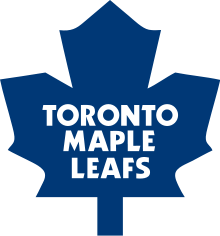
Following Stafford Smythe's death, Harold Ballard bought his shares to take control. Ballard's controversial term as the Leafs' owner was marked by several disputes with prominent players, including Keon, Lanny McDonald, and Darryl Sittler, poor win/loss records and no championships.
During the 1970s, the overall talent level in the League was diluted by the addition of 12 franchises and the birth of the rival World Hockey Association (WHA). The Leafs iced their competition for several seasons. However, despite the presence of stars such as Sittler, McDonald, Dave "Tiger" Williams, Ian Turnbull and Borje Salming, they only once made it past the second playoff round, besting the New York Islanders (a future dynasty) in the 1978 quarters only to be swept by arch-rival Montreal in the semis. One of the few highlights from this era occurred on February 7, 1976, when Sittler scored six goals and four assists against Boston to establish a NHL single-game points record that still stood more than 30 years later.
The serious decline started in July 1979, when Ballard brought back Imlach, a long-time friend, as general manager. Imlach traded McDonald to undermine Imlach's friend Sittler's influence on the team.[15] Sittler himself was gone two years later, when the Leafs traded him to the Philadelphia Flyers. He was the franchise's all-time leading scorer until Mats Sundin passed him in 2007.
The McDonald trade sent the Leafs into a downward spiral. They finished five games under .500 and barely made the playoffs. For the next 12 years, the Leafs (who had shifted to the Norris Division for the 1981–82 season) were barely competitive, not posting another winning record until 1992–93. They missed the playoffs six times and finished above fourth in their division only once (in 1990, the only season where they won even half their games). They made it beyond the first round of the playoffs twice (in 1986 and 1987, advancing to the division finals). The low point came in 1984–85, when they finished 32 games under .500, the second-worst record in franchise history (their .300 winning percentage was only 22 percentage points higher than the 1918–19 Arenas).
The Leafs' poor showing resulted in several high draft picks. Future captain Wendel Clark, the first overall pick in the 1985 NHL Entry Draft, was the lone success from the group.
Early 1990s: Resurgence
Ballard died in 1990, and Steve Stavro, Don Crump and Don Giffin were executors of his estate. Stavro succeeded Ballard as chairman of Maple Leaf Gardens Ltd. and governor of the Maple Leafs. Calgary Flames General Manager Cliff Fletcher, who had crafted the Flames' 1989 championship team, was hired by Don Giffin to run the team against the objections of Stavro, who told Fletcher directly that he wanted to install his own man.[16]
Fletcher immediately set about building a competitive club, making a series of trades and free agent acquisitions which turned the Leafs from an also-ran into a contender almost overnight, starting in 1992–93. Outstanding play from forwards Doug Gilmour (a Calgary acquaintance of Fletcher's) and Dave Andreychuk (acquired from the Buffalo Sabres in exchange for Grant Fuhr), as well as stellar goaltending from minor league call-up Felix Potvin, led the team to a then-franchise-record 99 points, third place in the Norris Division, and the eighth-best overall record in the NHL. Toronto dispatched the Detroit Red Wings in seven games in the first round, then defeated the St. Louis Blues in another seven games in the Division Finals.
Hoping to meet long-time rival Montreal (who was playing in the Wales Conference Finals against the New York Islanders) in the Cup Finals, the Leafs faced the Los Angeles Kings in the Campbell Conference Finals. The Leafs led the series 3–2, but dropped Game 6 in Los Angeles. The game was not without controversy, as Wayne Gretzky clipped Gilmour in the face with his stick, but referee Kerry Fraser did not call a penalty and Gretzky scored the winning goal moments later.[17] Gretzky's hat-trick in Game 7 finished the Leafs.
The Leafs had another strong season in 1993–94, finishing with 98 points, good enough for fifth overall in the League, their highest finish in 16 years. However, despite finishing one point above Calgary, Toronto was seeded third in the Western Conference (formerly the Campbell Conference) by virtue of the Flames' Pacific Division title. The Leafs eliminated divisional rival Chicago Blackhawks in six games and the San Jose Sharks in seven before falling to the Vancouver Canucks in five games in the Western Conference Finals. At that year's draft, the Leafs packaged Clark in a trade with the Quebec Nordiques that landed them Mats Sundin.
A new home and a new millennium
In 1996, Stavro took on Larry Tanenbaum, cofounder of Toronto's new National Basketball Association (NBA) team, the Toronto Raptors, as a partner. Maple Leaf Gardens Ltd. was accordingly renamed Maple Leaf Sports & Entertainment (MLSE), to be the parent company of the two teams. MLSE has expanded since then, adding the Toronto Marlies (the Leafs' farm team) of the American Hockey League (AHL) and the Toronto FC of Major League Soccer (MLS) to its stable.
After two years out of the playoffs in the late 1990s, the Leafs made two transactions for the upcoming 1998–99 season. They acquired goaltender Curtis Joseph as a free agent from the Edmonton Oilers and hired Pat Quinn, who had been fired by Vancouver in 1997, to serve as head coach. The Leafs were also moved from the Western to the Eastern Conference as part of a League realignment. In January 1999, the team moved from its longtime home Maple Leaf Gardens to the new Air Canada Centre, shared with the Raptors. During the 1999 playoffs, the team eliminated the Philadelphia Flyers and Pittsburgh Penguins in the first two rounds of the playoffs, but lost in five games to the Buffalo Sabres in the Eastern Conference Finals. Nonetheless it was their best post-season finish since their back-to-back Conference Finals appearances in 1993 and 1994.
In the 1999–2000 season, the Leafs hosted the mid-season All-Star Game, where Wayne Gretzky's jersey number 99 was retired League-wide. They compiled their first 100-point season and captured their first division title in 37 years. The 2000–01 regular season was less successful, however, as the Leafs could only clinch the seventh seed in their conference. In both of the 2000 and 2001 playoffs, the Leafs defeated the Ottawa Senators in the first round and lost to the New Jersey Devils in the second round. In 2000, the Leafs were limited to six shots as they lost the deciding Game 6 by a 3–0 scoreline, and in 2001 (after sweeping the Senators who were seeded second), the Leafs held a 3–2 series lead over the Devils but lost Game 6, 4–2, and Game 7, 5–1.
In 2002, the Leafs dispatched the Islanders and their Ontario rivals, the Senators, in the first two rounds, only to lose to the Cinderella-story Carolina Hurricanes in the Conference Finals. The 2002 season was particularly impressive in that injuries sidelined many of their better players, but the efforts of lesser-known players, mainly Gary Roberts and Alyn McCauley, led them to the Conference Finals.
Joseph joined the defending champion Red Wings in the 2002 off-season, though the Maple Leafs quickly found a replacement in free agent Ed Belfour, who signed from the Dallas Stars and had been a crucial part of their 1999 Stanley Cup run. Belfour played well during the regular season and was a finalist for the Vezina Trophy, though in the 2003 playoffs, the Leafs lost to Philadelphia in seven games during the first round. The year 2003 witnessed an ownership change, as Stavro sold his controlling interest in MLSE to the Ontario Teachers' Pension Plan and resigned his position as chairman of the board in favour of Larry Tanenbaum; Stavro later died in 2006. Pat Quinn remained as head coach but was replaced as general manager by a young John Ferguson Jr.
The 2003–04 season started in an uncommon way for the team, as they held their training camp in Sweden and played in the NHL Challenge against teams from Sweden and Finland. The Leafs went on to enjoy a very successful regular season, leading the NHL at the time of the All-Star Game (resulting in Quinn being named head coach of the East's All-Star Team) and eventually posting a franchise-record 103 points. They finished with the fourth-best record in the League, their highest overall finish in 41 years, achieving a .628 win percentage, their best in 43 years and third-best in franchise history. Toronto then defeated the Senators in the first round of the post-season for the fourth time in five years, with Ed Belfour posting three shutouts (setting the record for the most shutouts in a single playoff series) in seven games, but lost to the Flyers in six games during the second round.
Post-2004–05-lockout era
Following the 2004–05 NHL lockout, the Maple Leafs experienced very rough times. They struggled in 2005–06, and despite a late-season surge (9–1–2 in their final 12 games), led by third-string goaltender Jean-Sebastien Aubin, Toronto was out of playoff contention for the first time since 1998. This marked the first time that the team had missed under Head Coach Pat Quinn, who was subsequently fired after the season. Quinn's dismissal was controversial, since many of the young players that were key contributors to the Leaf's late-season run were drafted by Quinn prior to Ferguson's arrival, all while Ferguson's signings (Eric Lindros, Jason Allison, Alexander Khavanov and Ed Belfour) had suffered season-ending injuries.[18]
Paul Maurice, an experienced NHL coach who had just inaugurated the American Hockey League (AHL)'s Toronto Marlies, was announced as Pat Quinn's replacement. On June 30, 2006, the Maple Leafs bought-out the contract of long-time fan favourite Tie Domi. In addition to Domi, the Maple Leafs also decided against picking up the option year on the contract of goaltender Ed Belfour. Both players became free agents on July 1. However, despite the coaching change and addition of new players such as Pavel Kubina and Michael Peca, the Maple Leafs again did not make the playoffs in 2006–07.
For 2007–08, Toronto added Jason Blake and Vesa Toskala, while veterans Jeff O'Neill and Jean-Sebastien Aubin departed. Midway through the season, on January 22, 2008, General Manager John Ferguson, Jr., was fired and was replaced by former Maple Leafs GM Cliff Fletcher on an interim basis.[19] The Leafs again failed to qualify for the post-season, their first triple miss since before even the days of the Maple Leaf Gardens. It was also Mats Sundin's last year with the Leafs, as his contract was due to expire at the end of the season; he refused, however, Leaf management's request to waive his no-trade clause in order for the team to rebuilt by acquiring potential young talent and/or draft picks.[20]
On May 7, the Leafs fired Head Coach Paul Maurice and Assistant Coach Randy Ladouceur, and replaced them with former San Jose Sharks Head Coach Ron Wilson and assistants Tim Hunter and Rob Zettler.[21]
On November 29, 2008, the Maple Leafs hired Brian Burke as their 13th non-interim and first American general manager in team history. The acquisition ended the second Cliff Fletcher era and settled persistent rumours that Burke was coming to Toronto.[22]
On June 26, 2009, Burke made his first appearance as the Leafs GM at the 2009 NHL Entry Draft, selecting London Knights forward Nazem Kadri with the seventh overall pick.[23] On September 18, 2009, Burke traded Toronto's first- and second-round 2010, as well as its 2011 first-rounder, to the Boston Bruins in exchange for forward Phil Kessel.[24] On January 31, 2010, the Maple Leafs made another high-profile trade, this time with the Calgary Flames in a seven-player deal that brought defenceman Dion Phaneuf to Toronto.[25] On June 14, during the season's subsequent off-season, the Maple Leafs then named Phaneuf as captain after two seasons without a captain following Sundin's departure.[26] On February 18, 2011, the Leafs sent long-time Maple Leaf Tomas Kaberle to the Bruins in exchange for prospect Joe Colborne, Boston's first-round pick in 2011 and a conditional second-round draft choice.[27]
On March 2, 2012, Burke fired Head Coach Ron Wilson and named Randy Carlyle, a Stanley Cup winner with the Anaheim Ducks in 2007, as his replacement. The termination proved to be controversial, however, as Wilson had received a contract extension just two months prior to being let go.[28] On January 9, 2013, Burke himself was fired as general manager, replaced by Dave Nonis.[29]
In their first full season under the leadership of Carlyle, Toronto managed to secure a playoff berth in the shortened 2012–13 season for the first time in eight years, clinching their 2013 post-season appearance after a 4–1 victory on April 20, 2013, over provincial rivals Ottawa. The Leafs, however, lost in seven games to eventual 2013 Stanley Cup finalists Boston in the first round. Despite the season's success, it was not repeated during the 2013–14 season as the Leafs once again failed to make the playoffs.
2014–present: Brendan Shanahan era
Shortly after the end of the 2013–14 regular season, NHL Director of Player Safety Brendan Shanahan was named as the president and an alternate governor of the Maple Leafs.[30]
On January 6, 2015, the Maple Leafs fired Carlyle as head coach,[31] with Assistant Coach Peter Horachek taking over on an interim basis immediately after the firing. While the Maple Leafs had a winning record before Carlyle's firing, the team would eventually collapse. On February 6, 2015, the Leafs set a new franchise record of 11 consecutive games without a win. Both Dave Nonis and Horachek were relieved of their duties on April 12, just one day after the team's historically bad regular season concluded. Alongside these departures were the firings on coaches Steve Spott, Chris Dennis, Rick St. Croix; Director of Player Development Jim Hughes; and Director of Pro Scouting Steve Kasper, as well as Rob Cowie and 18 other scouts.[32][33][34][35] Later in the day, strength and conditioning coach Anthony Belza and video coordinator Adam Jancelewicz were fired.
On May 20, 2015, Mike Babcock was named as the new head coach, and on June 23, Lou Lamoriello was named the 16th GM in team history.[36][37] On July 1, 2015, the Leafs traded Phil Kessel, Tyler Biggs, Tim Erixon, and a second round pick to the Pittsburgh Penguins for Nick Spaling, Kasperi Kapanen, Scott Harrington, a conditional first round pick, and a third round pick. Toronto will also retain $1.2 million of Kessel’s salary in each of the next seven seasons.[38] On February 9, 2016, the Leafs traded Captain Dion Phaneuf to the Ottawa Senators alongside Matt Frattin, Casey Bailey, Ryan Repert, and Cody Donaghey in exchange for Jared Cowen, Colin Greening, Milan Michalek, Tobias Lindberg, and a 2017 2nd-round pick.[39] The Maple Leafs finished last in the NHL for the first time since the 1984–85 season and secured a 20 percent chance at winning the first overall pick in the 2016 NHL Entry Draft. They were also guaranteed to pick no lower than fourth.[40][41] They subsequently won the draft lottery and used the first overall pick to draft Auston Matthews.
Logo, uniform and mascot
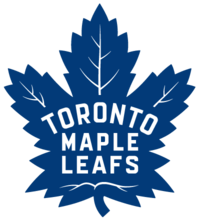
The jersey of the Maple Leafs has a long history and is one of the best-selling NHL jerseys among fans.[43] Throughout franchise history, Toronto's uniform has had four major incarnations and numerous minor alterations.
The original 1917 blue uniforms featured the letter “T” sometimes on a blue shield. The second version came in 1919 when they were renamed the St. Pats and wore green uniforms with “Toronto St. Pats” on the logo, lettered in green either on a white “pill” shape or stripes.[10][44]
The third major change was for the 1927–28 season when the team’s name changed to the Maple Leafs, gaining a new logo and returning to the blue uniform. The logo was a 47-point maple leaf with "Toronto Maple Leafs" lettered in white. The home jersey was blue with alternating thin-thick stripes on the arms, legs and shoulders. The road uniform was white with three stripes on the chest and back, waist and legs. For 1933–34, the alternating thin-thick stripes were replaced with stripes of equal thickness. This would remain as the basic design for the next 40 years.[45]
Before the next major change came several minor changes. In 1937, veins were added to the leaf and "Toronto" curved downwards at the ends instead of upwards.[46] In 1942, the 35-point leaf was introduced. In 1946, the logo added trimming to the Leaf with a white or blue border, while "C" for captain and “A” for alternate captain first appeared on the sweaters. In 1947, the "Toronto Maple Leafs" lettering was in red for a short time. In 1958, a six-eyelet lace and tie was added to the neck and a blue shoulder yoke was added. In 1961, player numbers added appeared on the sleeves.
The fourth major change came in the 1966–67 season. The leaf was changed to a blue 11-point leaf, similar to the leaf on the then-new flag of Canada to commemorate the Canadian Centennial.[45] This was followed by many minor changes. In 1970, the League required home teams to wear white jerseys. Other changes to the sweater removed the arm stripes, extended the yoke to the end of the sleeves,[45] added a solid stripe on the waist, three stripes on the stockings and a miniature Leaf crest added to shoulders. On the logo, the lettering "Toronto" was no longer curved, but parallel to the "Maple Leafs" lettering. The thin, blue 11-point maple leaf had rounded corners.
In 1973, the jersey’s neck was a lace tie-down design, and in 1976, the V-neck returned. In 1977, player names were added to the away jerseys and in 1979 to the home jerseys, but not until after the Leafs were fined by the NHL for refusing to comply with a new rule requiring player names on the jerseys.[45][47]
Since the early 1990s, fans showed interest in past jersey designs. For the 1991–92 season, the Leafs wore uniforms that were styled after the "original six" era for some games, while for the 1992–93 season, due to enthusiastic fan reaction for the previous season's classic uniforms, the first changes to the Leaf uniform in over twenty years were made. Two stripes on the arms and waist were added. A "TML" logo was added to the shoulder. During the late 1990s, the lettering and numbers were taken from the font on the Maple Leafs logo, but they gradually returned to block lettering, which they fully integrated in the 2010–11 season. When the Reebok Edge uniform system was introduced in the 2007–08 season, the tail stripes were absent from the change, but returned three years later. In addition, the veined leaf logo returned to the uniforms.[43][45][45]
On February 2, 2016, the team unveiled a new logo that will be adopted for 2016–17 season in honour of its centennial; it returns the logo to a form inspired by the earlier designs, with 31 points to allude to the 1931 opening of Maple Leaf Gardens, and 17 veins in reference of its 1917 establishment. 13 of the veins are positioned along the top portion in honour of its 13 Stanley Cup victories. The logo was subsequently accompanied by a new jersey design that was unveiled during the 2016 NHL Entry Draft on June 24, 2016.[42][48][49]
The team mascot is Carlton the Bear, an anthropomorphic polar bear whose name and number (#60) comes from the location of Maple Leaf Gardens at 60 Carlton Street, where they played throughout much of their history.
Rivalries
During the 25 years of the Original Six era, teams played each other 14 times during the regular season, and with only four teams continuing into the playoffs, rivalries were intense. As one of this era's most successful teams, the Maple Leafs established historic rivalries with the two other most successful teams of the time, the Montreal Canadiens and Detroit Red Wings.[50]
Montreal Canadiens
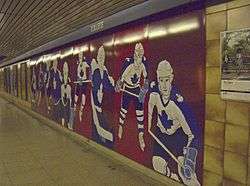
Toronto's rivalry with the Montreal Canadiens has been called hockey's greatest.[51] The Canadiens have won 24 Stanley Cups, while the Maple Leafs have won 13, ranking them first and second, respectively. While the rivalry began during the NHL's first season, it began in earnest when Toronto General Manager Frank J. Selke left his position in 1946 due to a dispute with Conn Smythe to become Montreal's general manager, eventually leading the Canadiens to six Cups. As of 2009, the two teams had faced each other 15 times in the playoffs, six in the Finals; Toronto has won four.[52] Although the rivalry declined after Toronto defeated Montreal in the 1967 Final, it re-emerged in 2007. With one game left in the season, Toronto trailed Montreal for the final playoff spot in the Eastern Conference by only one point. Down 5–3 in the second period, the Leafs won 6–5, preventing Montreal from taking the spot which enabled the New York Islanders to steal the position.[52]

The rivalry from the perspective of the Canadiens fan is perhaps most famously captured in the popular Canadian short story "The Hockey Sweater" by Roch Carrier. Originally published in French as "Une abominable feuille d'érable sur la glace" ("An abominable maple leaf on the ice"), it referred to the Maple Leafs sweater his mother forced a boy to wear. The boy is presumably based on Carrier himself when he was young. This rivalry is also evident in Toronto's College subway station, which displays murals depicting the two teams, each one on each platform.
Detroit Red Wings
While the Toronto–Montreal rivalry is one of the most famous in sport,[52] the rivalry with the Red Wings was no less intense. This rivalry dates to the 1920s. As of 1997, they had had 23 playoff meetings, five in the Finals. So fierce was the rivalry that when the New York Rangers reached the Finals against Detroit in 1950, but could not play in their home rink, Madison Square Garden, because the Ringling Bros. and Barnum & Bailey Circus were in town, they arranged to play home games in Toronto, whose fans hated the Red Wings.[53] The rivalry heightened to a fever pitch due to an incident in the 1950 playoffs when Detroit's young star, Gordie Howe, mistimed a check on Toronto's Ted Kennedy and fell head-first into the boards, suffering severe injuries and needed emergency surgery to save his life. While Kennedy was exonerated by the NHL, Detroit management and fans accused him of deliberately injuring Howe. The result was a violent playoff series and increased animosity between the teams.[54] The teams' proximity to each other — Toronto and Detroit are approximately 380 kilometres (240 mi) apart via Ontario Highway 401 — and a number of shared fans (particularly in markets such as Windsor, Ontario) added to the rivalry. After the Leafs moved to the Eastern Conference in 1998, they faced each other less often, and the rivalry was more often found in the stands than on the ice. The 2013 NHL Winter Classic would have been played between the Red Wings and the Maple Leafs at Michigan Stadium on January 1, 2013.[55] However, it has been postponed to January 1, 2014, due to the 2012–13 NHL lockout. The Leafs defeated the Red Wings in a penalty shootout with a final score of 3–2 in that game.
The rivalry became intradivisional once again in the 2013–14 season, when Detroit moved into the Eastern Conference as part of the NHL's realignment.
Ottawa Senators
The rivalry between the Leafs and the modern Ottawa Senators, known as the Battle of Ontario, heated up during the late 1990s, owing to the Canadiens' struggles during that period. The Leafs have won all four post-season series, including one four-game sweep. The rivalry diminished after the 2004–05 lockout, owing largely to Toronto's failure to make the post-season for seven straight seasons.[56]
Home rinks and practice facilities
Arena Gardens
The team's first home was the Arena Gardens, later known as the Mutual Street Arena, located at Mutual and Shuter Streets. From 1912 until 1931, the Arena was ice hockey's premier site in Toronto.[57] The Arena Gardens was the third arena in Canada to feature a mechanically-frozen, or "artificial," ice surface and for 11 years was the only such facility in Eastern Canada.[58]
Maple Leaf Gardens
In 1931, over a six-month period, Conn Smythe built Maple Leaf Gardens at a cost of C$1.5 million (C$23.2 million in 2016).[59] One of hockey's temples, it was the home arena for the team up until 1999. Located on the northwest corner of Carlton Street and Church Street, it acquired the nickname the "Carlton Street Cashbox," since the games were constantly sold out. The Leafs won 11 Stanley Cups from 1932 to 1967 whilst playing at the Gardens.[60] Another significant hockey event at the Gardens was an Ace Bailey All-Star Game in 1934 as a benefit for Maple Leafs forward Ace Bailey, who had suffered a career-ending head injury. The first annual NHL All-Star Game was also held at Maple Leaf Gardens in 1947.
Air Canada Centre
On February 20, 1999, the first Maple Leafs game took place at Air Canada Centre (ACC). Air Canada Centre is a multi-purpose indoor entertainment arena located on Bay Street in Downtown Toronto.[61] It is shared with the National Basketball Association (NBA)'s Toronto Raptors, which shares common ownership with the Maple Leafs under Maple Leaf Sports & Entertainment (MLSE).
MasterCard Centre
Besides the ACC, the Maple Leafs have a practice facility at the MasterCard Centre for Hockey Excellence. Opened in 2009, it was built on the site of the former Lakeshore Lions Arena (circa 1951). The practice facility has three NHL rinks and one Olympic-sized rink and is operated by the local Lions Club.[62]
In popular culture
References to the Maple Leafs have been very common in Canadian movies and television shows, as well as in radio and literature.
In 1946, the comedy team of Wayne and Shuster performed a sketch on their CBC radio program in which the imaginary hockey team, the Mimico Mice, competed against the Maple Leafs. Foster Hewitt did the play-by-play of the game, real Maple Leaf player names were used for the Leafs and Wayne and Shuster played the entire Mimico team.[63] In 1949, Foster Hewitt wrote a juvenile hockey novel, He Shoots, he scores!, which featured the team, including actual managers and players.[64]
In 1963, Scott Young wrote A Boy at the Leafs' Camp, a children's book giving a behind-the-scenes insight into the sport.[65] In 1971, Young and George Robertson cowrote an adult hockey-romance novel, Face-off, about the experiences of a star rookie player, Billy Duke, with the Maple Leafs.[66] The novel became a movie in 1971 with Art Hindle as Billy Duke. The film featured many of the players. Jim McKenny, body-doubled for Hindle for the on-ice action scenes due to a resemblance to Hindle. Owner Ballard had a part as the team doctor.[67]
In 1979, Roch Carrier wrote the short story The Hockey Sweater about a young boy who was forced to wear the hated Maple Leafs sweater instead of his beloved Montreal Canadiens sweater by his mother, who had given it to him as a present. In 1980, the story was turned into an animated short by the National Film Board of Canada.[68]
In 1992, Canadian rock band The Tragically Hip released the song "Fifty Mission Cap," which memorialized Bill Barilko.[69] The 1993 film Gross Misconduct was about the life of former Maple Leaf Brian Spencer.[70] Comedian Mike Myers, a fan, often included references and even an entire plot line in his films. In Austin Powers in Goldmember, the ticker below the news item on a television reads, "Maple Leafs win Stanley Cup." In another scene, the character Mini-Me wears a Maple Leaf sweater.[71] Myers played a guru hired to help the Maple Leafs' star player in the movie The Love Guru.[72] At the beginning of the 2010 spy film Fair Game, CIA agent Valerie Plame is being questioned by a suspicious weapons trafficker. He asks her if she is an American, and after responding that she is Canadian, he asks her about the Maple Leafs. She replies that she is not a fan.[73]
Fan base
Maple Leafs home games have long been one of the toughest tickets to acquire even during losing seasons.[74] Maple Leaf Gardens sold out every game from 1946 until the building closed in 1999.[60] In 2008, there was a waiting list of about 2,500 names for season tickets. With an average of US$1.9 million per game, the Leafs had the highest average ticket revenue per game in the 2007–08 season; the previous season they earned about $1.5 million per game.[75]
Maple Leaf fans are loyal despite poor rewards—in a 2014 survey by ESPN The Magazine, the Leafs were ranked last out of the 122 professional teams in the Big Four leagues. Teams were graded by stadium experience, ownership, player quality, ticket affordability, championships won and "bang for the buck"; in particular, the Leafs came last in ticket affordability and second-last in championships won or expected.[76] Conversely, fans of other teams harbour an equally passionate dislike of the team. In November 2002, the Leafs were named by Sports Illustrated hockey writer Michael Farber as the "Most Hated Team in Hockey."[77]
A large number of Leaf fans live in the Ottawa Valley and in the Niagara region. As a result, Leafs-Senators games at the Canadian Tire Centre (formerly the Scotiabank Place and originally the Corel Centre) in Ottawa and Leafs-Sabres games at the KeyBank Center in Buffalo are more neutral (50–50) due to the large influx of Leaf fans, due in part to those cities' proximity to Toronto and the relatively greater ease in getting tickets to those teams' games (particularly in Buffalo, where fan-friendly ownership kept ticket prices relatively low).
Despite Toronto's usual loyal fan base, however, there were several occurrences in the 2014–15 season where fans threw Leafs jerseys onto the ice to show disapproval of the team's poor performances in the past few decades.[78] Similarly, during the late-regular season that overlaps with the opening baseball season, fans have also been heard sarcastically chanting "Let's go Blue Jays!" as a sign of their shift in priority.[79][80][81]
Broadcasters
As a result of both Bell Canada and Rogers Communications having an ownership stake in MLSE, Leafs broadcasts are split between these two media companies. Radio broadcasts are split evenly between Rogers' CJCL (Sportsnet 590, The Fan) and Bell's CHUM (TSN Radio 1050), and regional TV broadcasts are split between Rogers' Sportsnet Ontario and Bell's TSN4.[82] Prior to the 2014–15 season, Leafs TV, a regional specialty channel directly owned by MLSE, also aired selected regional games.
Season-by-season record
Note: GP = Games played, W = Wins, L = Losses, T = Ties, OTL = Overtime losses, Pts = Points, GF = Goals for, GA = Goals against
| Season | GP | W | L | OTL | Pts | GF | GA | Finish | Playoffs |
| 2011–12 | 82 | 35 | 37 | 10 | 80 | 231 | 264 | 4th, Northeast | Did not qualify |
| 2012–13 | 48 | 26 | 17 | 5 | 57 | 145 | 133 | 3rd, Northeast | Lost in Conference Quarterfinals, 3–4 (Bruins) |
| 2013–14 | 82 | 38 | 36 | 8 | 84 | 231 | 256 | 6th, Atlantic | Did not qualify |
| 2014–15 | 82 | 30 | 44 | 8 | 68 | 211 | 262 | 7th, Atlantic | Did not qualify |
| 2015–16 | 82 | 29 | 42 | 11 | 69 | 198 | 246 | 8th, Atlantic | Did not qualify |
Players
Current roster
Updated November 21, 2016[83][84]
Honoured members
Retired numbers
The Maple Leafs have retired 13 numbers to date,.[85]
Between October 17, 1992 - October 15, 2016, the Maple Leafs took a unique approach to "retired numbers". Whilst players who suffered a career ending injury had their numbers retired, "great" players had their number "honoured". This meant that, although it hung from the rafters, the number was still in team circulation, and thus could be worn by other players. During this period, only 2 players met the criteria, the first being the #6 worn by Ace Bailey on February 14, 1934, with Bill Barilko's #5 following on October 17, 1992.[86] Bailey holds the distinction of being the first player in NHL history to have their number retired. Alongside the 2 retired numbers were 10 honoured numbers for 16 players; the first players to receive this treatment were Syl Apps and Ted Kennedy, on October 3, 1993, while Mats Sundin was the last player to receive this treatment on February 11, 2012.
On October 15, 2016, prior to the home opening game of the team's centenary season, it was announced that the Maple Leafs had changed their philosophy on retiring numbers, and that the numbers of those 16 honoured players would henceforth be retired, in addition to the retirement of Dave Keon's number.[87]
| Player elected to the Hockey Hall of Fame |
| Number retired for multiple players |
| No. | Player | Position | Tenure | Date of retirement |
|---|---|---|---|---|
| 6 | Ace Bailey | RW | 1926–1933 | February 14, 1934 |
| 5 | Bill Barilko | D | 1945–1951 | October 17, 1992 |
| 10 | Syl Apps | C | 1936–1948 | October 15, 2016 |
| 10 | George Armstrong | RW | 1949–1971 | October 15, 2016 |
| 1 | Johnny Bower | G | 1958–1969 | October 15, 2016 |
| 1 | Turk Broda | G | 1935–1943, 1946–1951[Notes 1] | October 15, 2016 |
| 7 | King Clancy | D | 1930–1937 | October 15, 2016 |
| 17 | Wendel Clark | LW | 1985–1994, 1996–1998, 2000 | October 15, 2016 |
| 9 | Charlie Conacher | RW | 1929–1938 | October 15, 2016 |
| 4 | Hap Day | D | 1924–1937 | October 15, 2016 |
| 93 | Doug Gilmour | C | 1992–1997 | October 15, 2016 |
| 7 | Tim Horton | D | 1949–1970 | October 15, 2016 |
| 4 | Red Kelly | C | 1960–1967 | October 15, 2016 |
| 9 | Ted Kennedy | C | 1942–1957 | October 15, 2016 |
| 27 | Frank Mahovlich | LW | 1956–1968 | October 15, 2016 |
| 21 | Borje Salming | D | 1973–1989 | October 15, 2016 |
| 27 | Darryl Sittler | C | 1970–1982 | October 15, 2016 |
| 13 | Mats Sundin | C | 1994–2008 | October 15, 2016 |
| 14 | Dave Keon | C | 1960–1975 | October 15, 2016 |
Notes
- ↑ Broda played his entire career with the Maple Leafs, however, he did not play between 1943 and 1946, as he was fighting in the Second World War.
Hall of Famers
The following members of the Toronto Maple Leafs have been inducted into the Hockey Hall of Fame. The list includes anyone who played for the Leafs who was later inducted as a player. The list of builders includes anyone inducted as a builder who spent any part of their career in a coaching, management or ownership role with the Maple Leafs.
Players
- Jack Adams, C, 1922–26, inducted 1959
- Glenn Anderson, RW/LW, 1991–94, inducted 2008
- Syl Apps, C, 1936–48, inducted 1961
- George Armstrong, C/RW, 1950–71, inducted 1975
- Ace Bailey, LW, 1926–33, inducted 1978
- Andy Bathgate, RW, 1963–65, inducted 1978
- Ed Belfour, G, 2002–06, inducted 2011
- Max Bentley, C, 1947–53, inducted 1966
- Leo Boivin, D, 1951–55, inducted 1986
- Johnny Bower, G, 1958–70, inducted 1976
- Turk Broda, G, 1936–52, inducted 1967
- Harry Cameron, D, 1917–23, inducted 1962
- Gerry Cheevers, G, 1961–62, inducted 1985
- King Clancy, D, 1930–36, inducted 1958
- Sprague Cleghorn, D, 1920–21, inducted 1958
- Charlie Conacher, RW, 1929–37, inducted 1961
- Rusty Crawford, LW, 1917–19, inducted 1962
- Hap Day, D, 1924–37, inducted 1961
- Gordie Drillon, RW, 1937–42, inducted 1975
- Dick Duff, LW, 1954–64, inducted 2006
- Babe Dye, RW, 1920–26, 1930, inducted 1970
- Fernie Flaman, D, 1950–54, inducted 1990
- Ron Francis, C, 2004, inducted 2007
- Grant Fuhr, G, 1991–93, inducted 2003
- Mike Gartner, RW, 1994–96, inducted 2001
- Eddie Gerard, D, 1922, inducted 1945
- Doug Gilmour, C, 1991–97, 2003, inducted 2011
- George Hainsworth, G, 1933–37, inducted 1961
- Hap Holmes, G, 1917–19, inducted 1972
- Red Horner, D, 1928–40, inducted 1965
- Tim Horton, D, 1952–70, inducted 1977
- Phil Housley, D, 2003, inducted 2015
- Syd Howe, LW, 1931–32, inducted 1965
- Busher Jackson, LW, 1929–39, inducted 1971
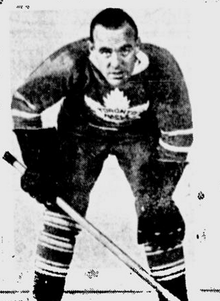
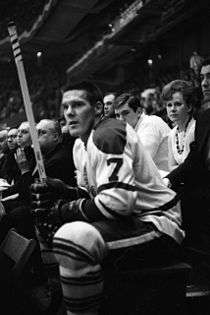
- Red Kelly, D, 1960–67, inducted 1969
- Ted Kennedy, C, 1943–57, inducted 1966
- Dave Keon, C, 1960–75, inducted 1986
- Brian Leetch, D, 2004, inducted 2009
- Eric Lindros, C, 2005–06, inducted 2016
- Harry Lumley, G, 1952–56, inducted 1980
- Frank Mahovlich, LW, 1957–68, inducted 1981
- Lanny McDonald, RW, 1973–79, inducted 1992
- Dickie Moore, LW, 1964–65, inducted 1974
- Larry Murphy, D, 1995–97, inducted 2004
- Joe Nieuwendyk, C, 2003–04, inducted 2011
- Frank Nighbor, C, 1929–30, inducted 1947
- Reg Noble, LW, 1919–24, inducted 1962
- Bert Olmstead, LW, 1958–62, inducted 1985
- Bernie Parent, G, 1970–72, inducted 1984
- Pierre Pilote, D, 1968–69, inducted 1975
- Jacques Plante, G, 1970–73, inducted 1978
- Babe Pratt, D, 1942–46, inducted 1966
- Joe Primeau, C, 1927–36, inducted 1963
- Marcel Pronovost, D, 1965–70, inducted 1978
- Bob Pulford, LW, 1956–70, inducted 1991
- Borje Salming, D, 1973–89, inducted 1996
- Terry Sawchuk, G, 1964–67, inducted 1971
- Sweeney Schriner, LW, 1939–46, inducted 1962
- Darryl Sittler, C, 1970–82, inducted 1989
- Allan Stanley, D, 1958–68, inducted 1981
- Mats Sundin, C, 1994–2008, inducted 2012
- Norm Ullman, C, 1968–75, inducted 1982
- Harry Watson, LW, 1946–55, inducted 1994
Builders
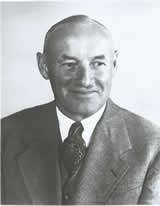
- Al Arbour, played for Toronto 1961–66, inducted as a builder 1996
- Harold Ballard, owner/executive/director, 1957–89, inducted 1977
- J. P. Bickell, shareholder/director, 1919–51, inducted 1978
- Pat Burns, coach, 1992–96, inducted 2014
- Cliff Fletcher, president/general manager/executive, 1991–97 and 2008–09, inducted 2004
- Jim Gregory, general manager, 1969–79, inducted 2007
- Foster Hewitt, announcer, 1927–63, inducted 1965
- Punch Imlach, coach/general manager, 1958–69 and 1979–80, inducted 1984
- Dick Irvin, coach, 1931–40, inducted 1958
- Lou Lamoriello, general manager, 2015–present, inducted 2009
- Frank Mathers, player/executive, 1948–52, inducted 1992
- Howie Meeker, player/coach/general manager/broadcaster, 1946–57, inducted 1998
- Roger Neilson, coach, 1977–79, inducted 2002
- Bud Poile, player/executive, 1942–48, inducted 1990
- Pat Quinn played for Toronto 1968–70, coach/general manager, 1998–2006 and 1999–2003, inducted 2016
- Mike Rodden, coached for Toronto 1926–27, inducted as a referee in 1962
- Frank J. Selke, executive, 1929–46, inducted 1960
- Conn Smythe, owner/executive/director, 1927–66, inducted 1958
- Carl Voss, player/executive, 1926–29, inducted 1974
Team captains
- Bert Corbeau, 1927[88]
- Hap Day, 1927–37
- Charlie Conacher, 1937–38
- Red Horner, 1938–40
- Syl Apps, 1940–43
- Bob Davidson, 1943–45
- Syl Apps, 1945–48
- Ted Kennedy, 1948–55
- Sid Smith, 1955–56
- Jimmy Thomson, 1956–57
- Ted Kennedy, 1957
- George Armstrong, 1958–69
- Dave Keon, 1969–75
- Darryl Sittler, 1975–79; 1980–82
- Rick Vaive, 1982–86
- Rob Ramage, 1989–91
- Wendel Clark, 1991–94
- Doug Gilmour, 1994–97
- Mats Sundin, 1997–2008
- Dion Phaneuf, 2010–16
Franchise scoring leaders
These are the top-ten point-scorers in franchise history, as of the end of the 2013–14 season. Figures are updated after each completed NHL regular season.
Legend: Pos = Position; GP = Games played; G = Goals; A = Assists; Pts = Points; P/G = Points per game; * = current Maple Leafs player
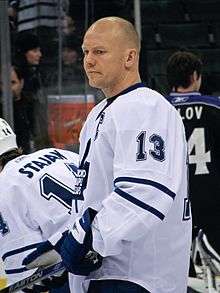
| Player | Pos | GP | G | A | Pts | P/G |
|---|---|---|---|---|---|---|
| Mats Sundin | C | 981 | 420 | 567 | 987 | 1.01 |
| Darryl Sittler | C | 844 | 389 | 527 | 916 | 1.09 |
| Dave Keon | C | 1062 | 365 | 493 | 858 | .81 |
| Borje Salming | D | 1099 | 148 | 620 | 768 | .70 |
| George Armstrong | RW | 1187 | 296 | 417 | 713 | .60 |
| Ron Ellis | RW | 1034 | 332 | 308 | 640 | .62 |
| Frank Mahovlich | LW | 720 | 296 | 303 | 599 | .83 |
| Bob Pulford | LW | 947 | 251 | 312 | 563 | .59 |
| Ted Kennedy | C | 696 | 231 | 329 | 560 | .80 |
| Rick Vaive | RW | 534 | 299 | 238 | 537 | 1.01 |
Source: Toronto Maple Leafs Media Guide.[89]
Farm teams
Historical

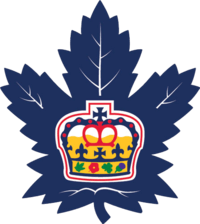
- Syracuse Stars AHL farm team, 1936–1940
- Pittsburgh Hornets AHL farm team, 1940–1956
- Rochester Americans AHL farm team, 1956–1968
- Toronto Marlboros Junior A affiliate, 1927–1967
- Toronto St. Michael's Majors Junior A affiliate, 1933–1961
- Tulsa Oilers CPHL/CHL farm team, 1964–1973
- Denver Invaders WHL farm team, 1963–1964
- Victoria Maple Leafs WHL farm team, 1964–1967
- Oklahoma City Blazers CHL farm team, 1973–1976
- Dallas Black Hawks CHL farm team, 1976-1981
- Markham Waxers former farm team
- Cincinnati Tigers CHL farm team, 1981–1982
- St. Catharines Saints AHL farm team, 1982–1986
- Newmarket Saints AHL farm team farm team, 1986–1991
- St. John's Maple Leafs AHL farm team, 1991–2005
- Memphis RiverKings CHL farm team, 2001–2006
- Columbia Inferno ECHL farm team, 2006–2008
- Reading Royals ECHL farm team, 2008–2012
Current
- Toronto Marlies AHL farm team, 2005–present
- Orlando Solar Bears ECHL farm team, 2013–present
See also
| Wikimedia Commons has media related to Toronto Maple Leafs. |
- Original Six
- Toronto Blueshirts (1912–1917)
- History of the Toronto Maple Leafs
- List of Toronto Maple Leafs players
- List of Toronto Maple Leafs draft picks
- List of Toronto Maple Leafs head coaches
- List of Toronto Maple Leafs general managers
- List of Toronto Maple Leafs seasons
- List of Toronto Maple Leafs records
- List of Toronto Maple Leafs award winners
- List of Toronto Maple Leafs broadcasters
References
- Holzman, Morey; Nieforth, Joseph (2002). Deceptions and doublecross: how the NHL conquered hockey. Dundurn Press. ISBN 1-55002-413-2.
- Hunter, Douglas (1997). Champions: The Illustrated History of Hockey's Greatest Dynasties. Chicago: Triumph Books. ISBN 1-57243-213-6.
- Lashway, John, ed. (2008). Toronto Maple Leafs Media Guide 2008–09. Toronto Maple Leafs.
- Morrison, John; McLatchy, Doug (1996). The Toronto Blue Shirts a.k.a. The Torontos, the NHL's first Stanley Cup champions 1917-1918. Hockey Information Service Inc. ISBN 1-894014-00-6.
- Obodiac, Stan. The First 50 Years. McClelland and Stewart Limited. ISBN 0-7710-9064-1.
- Smythe, Thomas Stafford; Shea, Kevin (2000). Centre Ice: The Smythe Family, the Gardens and the Toronto Maple Leafs Hockey Club. Fenn Publishing.
- Notes
- ↑ Ulmer, Mike (June 14, 2010). "The History Of The Sweater". Toronto Maple Leafs. Retrieved February 3, 2016.
- ↑ "Maple Leafs History - 1920's". Toronto Maple Leafs. Retrieved February 3, 2016.
In February of 1927, Conn Smythe, who had built the New York Rangers franchise but was dismissed in favour of Lester Patrick, raised enough money to buy the St. Pats and prevented the team from moving to Philadelphia. Smythe, a military man, immediately had the Toronto franchise name changed from the St. Pats to Maple Leafs. He also switched the uniform colours to blue and white from green and white.
- ↑ "CRTC Approves Sale Of Maple Leaf Sports And Entertainment To Bell And Rogers |". Allaccess.com. August 17, 2012. Retrieved January 8, 2014.
- ↑ "The World's 50 Most Valuable Sports Teams 2015". Forbes. July 15, 2015. Retrieved July 15, 2015.
- 1 2 Holzman & Nieforth 2002.
- ↑ "History of the NHL". angelfire.com. Retrieved April 21, 2012.
- 1 2 "NHL - The Early Years". Hockey Site In Canada. Retrieved April 21, 2012.
- ↑ Hunter 1997, p. 19.
- ↑ Morrison & McLatchy 1996.
- 1 2 "Maple Leafs History: 1920s". NHL.com. Retrieved September 14, 2011.
- ↑ Hunter 1997, p. 18.
- ↑ Smythe & Shea 2000, p. 36.
- ↑ "Good-bye St. Pats, howdy Maple Leafs", The Globe, February 15, 1927, p. 6.
- ↑ "Toronto crumbles New York chances", The Globe, February 18, 1927, p. 8.
- ↑ Kernaghan, Jim (December 29, 1979). "Lanny McDonald trade has Sittler in tears". Toronto Star. p. 1.
- ↑ Cox, Damien; Stellick, Gord (2004). '67, The Maple Leafs: Their Sensational Victory and the End of an Empire. Wiley. p. 12. ISBN 0-470-83400-5.
- ↑ Zeisberger, Mike (April 7, 2007). "Better than a Game 7: Hockey icons' true colours show through". SLAM! Sports. Retrieved June 28, 2008.
- ↑ "Site Map". Tsn.ca. November 22, 2013. Retrieved January 8, 2014.
- ↑ "TSN : NHL — Canada's Sports Leader". Archived from the original on January 23, 2008. Retrieved January 22, 2008.
- ↑ "Leafs' Sundin won't waive no-trade clause - Hockey - CBC". Cbc.ca. February 24, 2008. Retrieved January 8, 2014.
- ↑ "Maple Leafs fire head coach Paul Maurice". TSN.ca. May 7, 2008. Retrieved May 7, 2008.
- ↑ "Leafs introduce Burke as new president and general manager". TSN.ca. November 29, 2008. Retrieved January 21, 2009.
- ↑ "Nazem Kadri drafted by Leafs". PensionPlanPuppets. Retrieved August 16, 2011.
- ↑ "Kessel traded to Maple Leafs, signs 5-year, $27m contract". TSN. September 19, 2009.
- ↑ "FLAMES TRADE D PHANEUF TO MAPLE LEAFS IN SEVEN-PLAYER DEAL". tsn.ca. January 31, 2010. Retrieved January 31, 2010.
- ↑ "Maple Leafs introduce Phaneuf as team's captain". CTV.com. June 14, 2010. Retrieved June 14, 2010.
- ↑ "Tomas Kaberle Traded to Boston; Bruins Trade Blake Wheeler to Atlanta". AOL. February 18, 2011. Retrieved June 21, 2011.
- ↑ http://www.thestar.com/sports/leafs/2012/03/02/ron_wilson_fired_leafs_turn_to_randy_carlyle.html
- ↑ "Maple Leafs Replace Burke With Nonis As New GM". TSN. January 9, 2013. Retrieved January 9, 2013.
- ↑ "Brendan Shanahan Named Leafs President & Alternate Governor". Maple Leafs Official Website. Retrieved July 25, 2014.
- ↑ http://www.citynews.ca/2015/01/06/maple-leafs-fire-head-coach-randy-carlyle/
- ↑ "Maple Leafs announce organizational changes". Toronto Maple Leafs. April 12, 2015. Retrieved April 12, 2015.
- ↑ "Mark Spector on Twitter". April 12, 2015. Retrieved July 22, 2015.
- ↑ "Ryan Fabro on Twitter". April 12, 2015. Retrieved July 22, 2015.
- ↑ "Maple Leafs announce changes to scouting staff". Toronto Maple Leafs. April 12, 2015. Retrieved July 22, 2015.
- ↑ "Mike Babcock hired by Maple Leafs as coach". May 20, 2015. Retrieved July 22, 2015.
- ↑ "Lamoriello named Maple Leafs GM". July 23, 2015. Retrieved July 23, 2015.
- ↑ "Maple Leafs trade Phil Kessel to Penguins". Rogers Sportsnet. July 1, 2015. Retrieved Sep 20, 2015.
- ↑ "2015-16 NHL Trade Tracker". National Hockey League. Retrieved Mar 28, 2016.
- ↑ Koshan, Terry (April 9, 2016). "Toronto Maple Leafs lock up last place overall in NHL with 5-1 loss to New Jersey Devils in season finale". National Post. Retrieved April 28, 2016.
- ↑ McGran, Kevin (April 9, 2016). "Maple Leafs finish season in last place". Toronto Star. Retrieved April 28, 2016.
- 1 2 "Maple Leafs Unveil New Logo". Toronto Maple Leafs. February 2, 2016. Retrieved February 3, 2016.
- 1 2 Paul Hunter (June 14, 2010). "Leafs' new look is a bit old-school". Toronto Star. Retrieved September 6, 2011.
- ↑ Obodiac, p. 202.
- 1 2 3 4 5 6 Mike Ulmer. "The History Of The Sweater". NHL.com. Retrieved September 14, 2011.
- ↑ Obodiac, p. 212.
- ↑ "History of the Maple Leaf Uniform" (PDF). NHL.com. Retrieved September 14, 2011.
- ↑ "Leafs unveil new logo for 2016-17". TSN.ca. The Sports Network. February 2, 2016. Retrieved June 26, 2016.
- ↑ "Toronto Maple Leafs unveil new uniforms at 2016 NHL Draft". Toronto Maple Leafs. June 24, 2016. Retrieved June 26, 2016.
- ↑ Zweig, Eric (2010). Twenty Greatest Hockey Goals. Dundurn Press. p. 61. ISBN 978-1-55488-789-7.
- ↑ Mahovlich, Ted (1999). The Big M: The Frank Mahovlich Story. Sports Publishing LLC. p. 100. ISBN 1-58382-029-9. Note: "The Toronto Maple Leafs and the Montreal Canadiens, the greatest rivalry in hockey"
- 1 2 3 Wiggins, David K.; Rodgers, R. Pierre (2010). Rivals: legendary match ups that made sports history. The University of Arkansas Press. p. XV. ISBN 978-1-55728-920-9. note: "There are few sport rivalries better known than the one between the Toronto Maple Leafs and the Montreal Canadiens."
- ↑ Sheppard, Chess (1997). Heaven on ice: Ray Sheppard’s life in hockey. General Store Publishing House. p. 217. ISBN 1-896182-75-5.
- ↑ Fischler, Stan (2002). Red Wings Greatest Moments and Players. Sports Publishing. p. 244. ISBN 1-58261-271-4.
- ↑ Roarke, Shawn P. "Wings, Leafs to play '13 Winter Classic at Big House Wings, Leafs to play '13 Winter Classic at Big House Wings, Leafs to play '13 Winter Classic at Big House". NHL.com. Retrieved February 9, 2012.
- ↑ "Part II – Top rivalries". ESPN. Retrieved August 19, 2011.
- ↑ Young, Peter (2002). Let's Dance. Natural Heritage/Natural History Inc. p. 23. ISBN 1-896219-02-0.
- ↑ Filey, Mike (2008). Toronto: The Way We Were. Dundurn Press. p. 225. ISBN 978-1-55002-842-3.
- ↑ "Maple Leaf Gardens". TML Fever. Retrieved April 21, 2012.
- 1 2 "Maple Leaf Gardens". ballparks.com. Retrieved 23 December 2014.
- ↑ "History - Air Canada Centre". Air Canada Centre. Retrieved April 21, 2012.
- ↑ "MasterCard Centre for Hockey Excellence". Toronto Maple Leafs. Retrieved April 21, 2012.
- ↑ Ross A. Eaman. "Wayne and Shuster: Canadian comedy act". The Museum of Broadcast Communications. Retrieved September 22, 2011.
- ↑ Hewitt, Foster (1949). He Shoots, he scores. Thomas Allen.
- ↑ "A Boy at the Leafs' Camp". Goodreads.com. Retrieved September 18, 2011.
- ↑ Young, Scott; Robertson, George (1971). Face-off. MacMillan of Canada.
- ↑ "Face-Off". IMdb. Retrieved September 18, 2011.
- ↑ "The Hockey Sweater". IMdb. Retrieved September 18, 2011.
- ↑ Sherry Ross (October 15, 2006). "THE TRAGEDY OF BILL BARILKO. Death of Cory Lidle conjures memories of 1951 Stanley Cup hero.". Daily News. Retrieved September 18, 2011.
- ↑ "Gross Misconduct". IMdb. Retrieved September 18, 2011.
- ↑ Rob Granatstein (August 22, 2002). "Myers is groovy, baby!". Canoe. Retrieved September 24, 2011.
- ↑ "The Love Guru". IMdb. Retrieved September 18, 2011.
- ↑ Colin Covert (November 19, 2011). "Outed CIA agent's tale a stunning film". Idaho Statesmen. Retrieved September 12, 2011.
- ↑ Hornsby, Lance (October 18, 2006). "Avs, Leafs battle over sellout record". Toronto Sun. Retrieved May 1, 2008.
- ↑ Westhead, Rick (May 30, 2008). "Canadian NHL teams mean money". Toronto Star. Retrieved May 30, 2008.
- ↑ "Toronto Maple Leafs are the worst sports franchise in North America, according to ESPN". National Post. Canada. September 19, 2014. Retrieved April 2, 2015.
- ↑ "Sabres still searching for new owner". CBC Sports. November 17, 2002. Retrieved May 1, 2008.
- ↑ http://www.thestar.com/sports/leafs/2015/01/20/two-fans-charged-after-maple-leafs-jerseys-tossed-on-ice.html
- ↑ "Leafs fans: 'Let's go, Blue Jays!'". Sportsnet.ca. Retrieved 3 February 2016.
- ↑ "Leaf Nation turns its back on Toronto Maple Leafs". Toronto Star.
- ↑ "Toronto Maple Leafs look like a different team under Mike Babcock despite season-opening loss to Montreal Canadiens". National Post. Retrieved 3 February 2016.
- ↑ "Leafs Announce 2014-15 TV & Radio Broadcast Schedule". Toronto Maple Leafs. Retrieved October 11, 2014.
- ↑ "Maple Leafs Roster". Toronto Maple Leafs. Retrieved February 29, 2016.
- ↑ "NHL Hockey Injuries". CBS Sports. Retrieved February 11, 2016.
- ↑ "Toronto Maple Leafs Retired Numbers" on AboutSports.com
- ↑ "Honoured Players Process Different For Leafs" by John Iaboni, NHL.com, June 2005
- ↑ "Toronto Maple Leafs retire the numbers of 17 players". NHL.com. October 15, 2016. Retrieved October 16, 2016.
- ↑ Lashway, p. 159
- ↑ Lashway, p. 184
External links
- Official website
- Toronto Maple Leafs Official YouTube Channel
- Toronto Maple Leafs Official Twitter
- Toronto Maple Leafs Official Facebook
